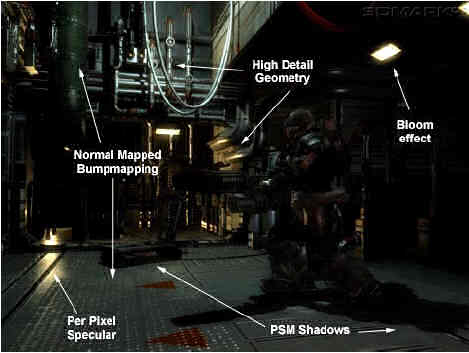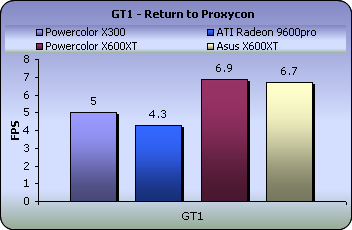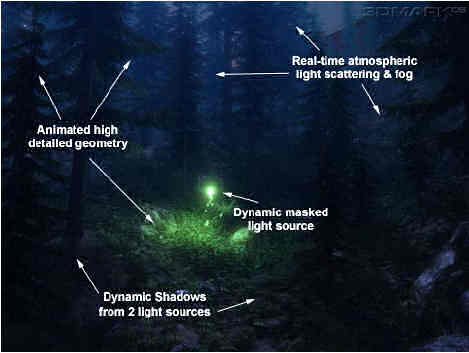Asus AX600XT
4. 3DMark05
3DMark05 - Page 04
![]() With 3DMark05, Futuremark continues the tradition in its benchmarking software by providing a state-of-the-art Microsoft ® DirectX ® 9 3D performance benchmark.
With 3DMark05, Futuremark continues the tradition in its benchmarking software by providing a state-of-the-art Microsoft ® DirectX ® 9 3D performance benchmark.
3DMark05 is an all new 3DMark version, making the most out of Microsoft's DirectX
9. The previous version, 3DMark03, provided a nice testbench for this
technology. However, 3DMark03 used DirectX 9 specific features in
a limited
manner, because fully supporting  hardware
was rare at the time of its launch. In contrast, 3DMark05 requires DirectX
9 hardware with full support for at least Shader Model 2, and takes shader
usage to never before seen levels.
hardware
was rare at the time of its launch. In contrast, 3DMark05 requires DirectX
9 hardware with full support for at least Shader Model 2, and takes shader
usage to never before seen levels.
Just like its predecessors, 3DMark05's point system is set so that at the moment
of release, the high-end VGA cards available on the market can only score around
5000 3DMarks, whereas the worst card that meets the program's requirements,
yields a score of 1000.
Game Test 1 - Return to Proxycon
Being the sequel to the "Battle of Proxycon" from 3DMark03, in "Return to Proxycon" we're once again set in space and the battle continues as space pirates invade a cargo ship in order to take control of its valuable cargo.

This test, tries to simulate a futuristic first-person shooter game with all the high details that such a game entails. The dynamic shadows, highly detailed environment and advanced lighting techniques, ensure that under normal circumstances, no recent card can run it with decent frame rates.

The two X600XT cards did much better than the X300 and the older generation 9600 Pro. The small difference of 0.2fps between them should not be consindered as indicative of any sort of performance difference.
Game Test 2 - Firefly Forest
A forest is filled with magic fireflies at night. The moon is nearly full, illuminating the forest with a bluish faint light. The magic fireflies have flickering, bright green lights that playfully move around the forest.
This scene is a nice example of a smaller scale outdoor scene with rich vegetation. Immediate visibility is only short range, and there is a skybox surrounding the whole scene.

A large number of trees with their branches swinging separately, and dense vegetation being dynamically distributed according to the camera movements, make this test the most demanding of the three.

The difference in frame rate for the second game increased where the AX600XT lost some more ground to the Powercolor card.
Game Test 3 - Canyon Flight
A Jules Verne type airship flies through a canyon guarded by a dangerous sea monster. The airmen defend their ship using heavy cannons, but these seem to have no effect on the huge sea monster. Finally, the crew manages a narrow escape using the airship's "last resort" afterburners.
This scene is fairly complex with large areas of water reflecting the high canyon walls. The water is actually one of the key points of interest in this scene. The water not only does realistic looking reflections and refractions, it has a depth fog, making the sea monster swimming under the airship appear deep down in the water. The air in this scene also uses a volumetric fog, making distant cliffs in the canyon appear far away.


In the third and much lighter game, the Asus AX 600XT rendered at an average rate of 8.1 frames per second but still couldn't match its competitor from the same family.
Final Score
3DMarks on 3DMark05 are now calculated with the following formula:
(Game Test 1 * Game Test 2 * Game Test 3)^0.33 * 250
This is basically the geometric mean of the total frames in each game multiplied by 250, which means that all game tests are on an equal par.
Let’s see the result for the AX600XT:

Immediately obvious in the game test scores is the fact that the Asus AX600XT couldn't overtake the Powercolor X600, which is reasonable since it didn't perform better in any of the game tests.





















